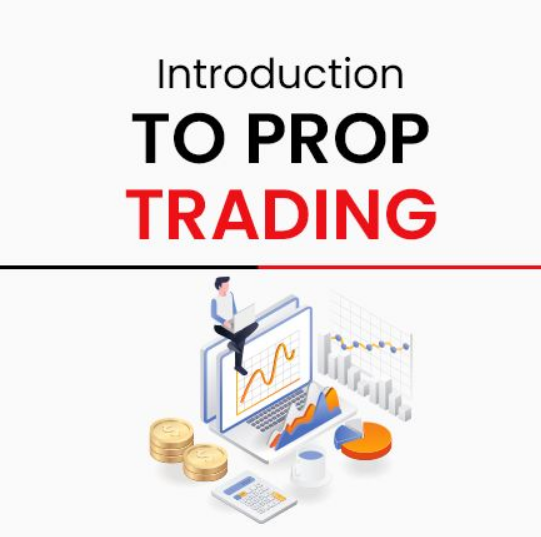Introduction: Mastering Low-Cost Prop Trading
In today’s competitive financial landscape, low-cost prop trading has become a pivotal strategy for both emerging and established traders. Proprietary trading firms now seek efficient, cost-effective methods to maximize returns while optimizing risk. This guide, crafted by a seasoned prop trading expert, provides advanced insights into the tools, techniques, and strategies that drive successful trading outcomes.
With technological advancements, platforms like TradingView, NinjaTrader, and MetaTrader 5 are revolutionizing how prop trading firms and individual traders approach backtesting and execution. In this article, we delve deep into how these tools function and compare them in terms of backtesting features, data quality, integration capabilities, and pricing models, ensuring you’re equipped with knowledge to choose the right solution for your trading setup.
Figure 1: A snapshot of a TradingView backtesting report showing key performance metrics.
Advanced Backtesting Tools: A Comparative Analysis
Effective backtesting is the cornerstone of a successful prop trading strategy. Here, we compare several robust tools, emphasizing backtesting capabilities that are critical in a prop trading context:
TradingView
Backtesting Features: TradingView employs vectorized backtesting, which allows quick simulation over large historical datasets. The platform handles commission, slippage, and even supports automated strategy optimization. Its scripting language Pine Script further enhances customization.
Data Quality & Integration: TradingView provides deep historical data across multiple asset classes. It seamlessly integrates with broker APIs, making it ideal for both solo traders and prop trading firms.
Pricing & Use Cases: With a freemium model and tiered subscriptions, TradingView is budget-friendly and particularly useful for retail and institutional use cases. It is a top choice for prop firms seeking scalable, collaborative solutions.
NinjaTrader
Backtesting Features: NinjaTrader delivers both event-driven and vectorized backtesting methodologies. Its extensive simulation capabilities include stress testing and scenario analysis that are essential for robust strategy validation.
Data Quality & Integration: The platform provides reliable historical data feeds and supports a wide range of brokers. Its integration with third-party analytics tools enhances in-depth performance reviews.
Pricing & Use Cases: NinjaTrader offers competitive pricing with options for leasing or outright purchase. It is preferred by prop firms that require advanced risk and compliance management tools alongside strong backtesting routines.
MetaTrader 5 (MT5)
Backtesting Features: MT5 provides comprehensive backtesting with support for multi-threaded processing. It includes features for optimizing parameters and simulating variable market conditions, critical for fine-tuning complex strategies.
Data Quality & Integration: With access to extensive historical data and a vast range of asset classes, MT5 integrates well with numerous financial instruments and broker feeds. It also supports expert advisors for automated trading.
Pricing & Use Cases: MT5 is largely free to use through broker partnerships, making it an excellent option for both individual traders and prop firms looking for zero-cost, robust backtesting functionality.
QuantConnect
Backtesting Features: QuantConnect offers event-driven backtesting using its Lean engine, combined with automated parameter optimization and report generation, facilitating detailed performance analytics.
Data Quality & Integration: It provides a comprehensive database that covers equities, forex, crypto, and futures. Integration via API allows for customized strategies and seamless transitions from research to live trading.
Pricing & Use Cases: QuantConnect operates on a subscription model with a free tier for basic usage. It’s particularly well-suited for advanced quants and prop firms seeking a scalable and collaborative trading research environment.
Advanced Backtesting Concepts and Pitfalls
Successful prop trading not only requires a robust choice of automated tools but also a deep understanding of advanced backtesting methodologies. Here are some critical concepts:
Common Pitfalls in Backtesting
- Overfitting: Crafting a strategy that performs well on historical data but fails under live market conditions. Use cross-validation and out-of-sample testing to mitigate this risk.
- Survivorship Bias: Ensuring that all historical data, including delisted stocks, is taken into account to avoid distorted performance figures.
- Look-Ahead Bias: Avoid incorporating future data into decision-making processes during simulation, which can mislead performance metrics.
- Data Snooping: Repeatedly testing multiple hypotheses on the same data set can lead to spurious correlations. Diversify your data sets when calibrating parameters.
Walk-Forward Optimization vs. Traditional Backtesting
Traditional backtesting relies on fixed historical periods to validate strategies, which can sometimes miss evolving market conditions. In contrast, walk-forward optimization recalibrates parameters periodically based on out-of-sample data. This dynamic approach often provides a better match to live trading environments, especially for prop traders who rely on rapid strategy adjustments.
The Importance of Out-of-Sample Testing and Forward Integration
Out-of-sample testing allows traders to validate their models on unseen data, ensuring that strategies are robust. Integrating these backtesting results with forward testing (such as paper trading) is essential before transitioning strategies to live trading. Monitoring key metrics such as the Sharpe ratio, profit factors, and maximum drawdown during these phases provides actionable insights and ensures the strategy’s resilience.
Data Quality and Sourcing for Effective Backtesting
Accurate, reliable data underpins effective backtesting. Whether you are using tick data or bar data, the following guidelines are crucial:
- Tick Data vs. Bar Data: Tick data provides a granular view, ideal for high-frequency strategies, while bar data offers a more aggregated perspective perfect for swing trading strategies.
- Handling Missing Data: Use interpolation or fill methods and consider corporate actions to adjust historical prices.
- Reliable Sources: Consider subscription services like Interactive Brokers and QuantVPS to ensure high-quality, real-time updates, especially important for prop trading risk management.
Figure 2: A detailed backtesting report from NinjaTrader highlighting stress metrics and optimization outcomes.
Real-World Case Studies in Prop Trading
Case studies offer invaluable insights into real-life decision-making in proprietary trading environments. Consider the following anonymized examples:
Case Study 1: Enhancing Strategy Robustness at a Leading Prop Firm
A leading prop trading firm faced challenges with strategy overfitting and slow iteration cycles. By integrating QuantConnect’s automated backtesting tools, the firm implemented walk-forward optimization techniques and rigorous out-of-sample testing. The firm saw a 25% improvement in its Sharpe ratio and reduced maximum drawdown by 15% over a six-month period. Regular performance reporting and dynamic parameter optimization were key to these results.
Case Study 2: Streamlining Risk Management with Combined Toolsets
Another prop firm focused on balancing cost efficiency with risk mitigation. They combined TradingView’s backtesting for retail insights with NinjaTrader’s simulation features to refine their risk management protocols. This hybrid approach enabled improved decision-making, with a significant reduction in latency during market stress, as indicated by faster reaction times and more accurate stop-loss triggers.
Expert Guidance: Actionable Steps for Prop Trading Success
For prop trading professionals at all levels, the path to success begins with meticulous testing and continual refinement. Below is a practical Risk Management Checklist for your trading strategies:
- Ensure your backtesting includes both in-sample and out-of-sample periods.
- Regularly update your data set to include recent market conditions, especially for volatile assets.
- Limit overfitting by setting realistic, broad parameters and using cross-validation methods.
- Monitor key metrics like Sharpe ratio, profit factor, and maximum drawdown after every strategy iteration.
- Integrate paper trading with your backtested strategy to verify performance before live deployment.
Additionally, consider integrating automated report generation and scenario analysis using tools like Backtrader to fine-tune strategies further. A common industry tip: Combine rigorous backtesting with forward simulation to create a resilient trading model that adapts to ever-changing market dynamics.
Tools, Code Examples, and Integration Guidelines
To streamline your backtesting process, here’s a simple Python example using Backtrader:
import backtrader as bt
class TestStrategy(bt.Strategy):
def __init__(self):
self.dataclose = self.datas[0].close
def next(self):
if not self.position:
if self.dataclose[0] < self.dataclose[-1]:
self.buy()
else:
if self.dataclose[0] > self.dataclose[-1]:
self.sell()
cerebro = bt.Cerebro()
cerebro.addstrategy(TestStrategy)
data = bt.feeds.YahooFinanceData(dataname='AAPL', fromdate=bt.datetime(2020, 1, 1), todate=bt.datetime(2021, 1, 1))
cerebro.adddata(data)
cerebro.run()
cerebro.plot()
This example illustrates a basic strategy. For prop trading environments, enhance such scripts with automated parameter optimization and stress testing modules integrated directly with your chosen platform.
Conclusion & Next Steps
Low-cost prop trading demands not just cost efficiency but also a sophisticated approach to backtesting and risk management. By leveraging advanced tools like TradingView, NinjaTrader, MetaTrader 5, and QuantConnect, traders can gain a competitive edge. Our guide has provided detailed comparisons, expert insights, and actionable steps tailored for both individual traders and large prop firms.
For further insights, check out our in-depth risk management guide and our article on advanced backtesting techniques to continuously improve your trading strategies.
As of October 2023, staying informed about current market trends and regulatory frameworks (e.g., MiFID II, ESMA, NFA) is crucial to maintaining compliance and strategic agility in the fast-paced world of prop trading.






